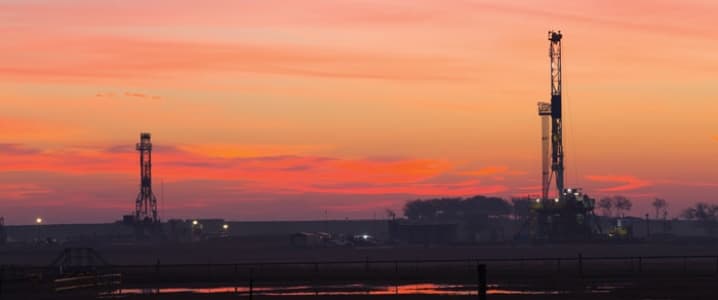The oil markets have long expected that U.S. shale production would rebound once oil prices started to rise. But the comeback of shale could be much faster and stronger than many once anticipated.
As Bloomberg Gadfly points out, the rise in U.S. oil production since output bottomed out at the end of last summer has been swift. Since September, U.S. production has climbed roughly 125,000 bpd on average each month, pushing total production above 9 million barrels per day. That is a much faster pace of growth than the original shale boom that began years ago. The corresponding period for the 2011-2014 shale boom saw monthly growth of just 93,000 bpd.
There are a few reasons for this. First, the industry is leaner than it once was, with some of the least efficient companies forced out of the market and the consolidated sector is now moving quickly with oil prices stabilized in the $50s per barrel range. Second, oil drillers have a lot more experience in shale than they did years ago. Improved drilling techniques, which include longer laterals, more wells per wellpad and stronger fracking processes are yielding more oil per rig and per well. Third, instead of drilling everywhere, companies are focusing on the best spots this time around. Finally, it isn’t just the small companies drilling in U.S. shale – the oil majors are increasingly getting into the shale game.
Relatedly, low oil prices have paradoxically made shale more attractive. With all but the most profitable large-scale projects off of the table, everyone is trying to get into relatively low-risk shale. Even though shale has famously suffered from higher breakeven costs, the upfront costs are low and returns are quick, making shale wells a safe bet. ExxonMobil has decided to allocate more than $5 billion to shale drilling in Texas and North Dakota this year, a dramatic shift from the megaproject-focus that the company has had for decades. Related: As Non-OPEC Compliance Hits 60%, Oil Prices Remain Stagnant
That all means that U.S. shale is now one of the most highly-prized areas for new oil investment. "North American oil companies are going to increase their spending by 25 percent in 2017 compared to last year," Daniel Yergin, oil historian and Vice Chairman of IHS Markit, told Bloomberg. "The increase reflects the magnetism of U.S. shale."
More rigs and more investment could mean stronger gains in shale production this time around compared to the original shale boom. As Bloomberg notes, shale companies like EOG Resources and RSP Permian are projecting production increases of 30 percent in the next two to three years, a larger increase than the companies posted in the first shale boom.
ExxonMobil is planning to produce 750,000 bpd from U.S. shale by 2025, or about a fifth of the company’s total output.
Chevron is stepping up spending on the Permian Basin as well. "Chevron has a big position in the Permian, and Exxon just bought a new position. That's the kind of proof of the pudding that the independents like myself are saying, 'It's the best basin the world.'" Randy Foutch, founder and CEO of Laredo Petroleum, told CNBC. Related: Despite Promises To Cut, Iraq Raises February Oil Exports
It should be noted that while the U.S. has gained around 400,000 bpd since September, some of that came from a handful of large-scale offshore projects that came online, projects that were planned years ago. However, as Bloomberg Gadfly argues, that was also the case during the first shale boom.
In short, shale production could come back much faster than the markets originally expected. For now, estimates run the gamut. JP Morgan says shale production will add 400,000 bpd by the end of 2017 while Rystad Energy and Macquarie put the figure at a much higher 900,000 bpd.
The higher end of that range should not be ruled out given the early signs of robust growth. If gains in shale production rise by that much, they could go a long way to offsetting the OPEC cuts. The realization of a swift U.S. shale rebound is also starting to set in. With WTI and Brent failing to make any meaningful price gains since December, OPEC is now starting to consider an extension of its deal through the end of the year.
By Nick Cunningham of Oilprice.com
More Top Reads From Oilprice.com:
- Saudi King Goes East In Search Of Friends And Cash
- The Secret Wealth Of The World’s Richest Oil Billionaires
- Are Oil Prices Really Driven By Supply And Demand?



















imho a patient speculator can make decent money over the coming years by shorting PXD, CLR and the likes
First, as you’ve mention, increased domestic production fails to vet new offshore production. That admission alone, on your part, throws your presentation in to “extreme” suspect. Furthermore, the fact that the production industry has 4000+ drilled wells simply sitting out their waiting to be fracked, that the bulk of these wells exist in the most productive and price competitive plays, the fact that fracking technology has improved tremendously in the past two years and that the cost of fracking is rendered more economical because of such improvements pretty much, at least in my mind, renders your article of no substantive value what so ever. Simply put, your article along with many others written, are simply “Charlie Tuna” articles, ie, they look good but really don’t contribute substance and quality to the subject critiqued.